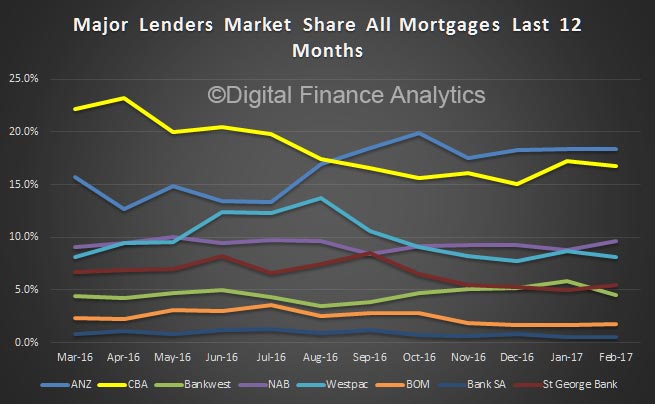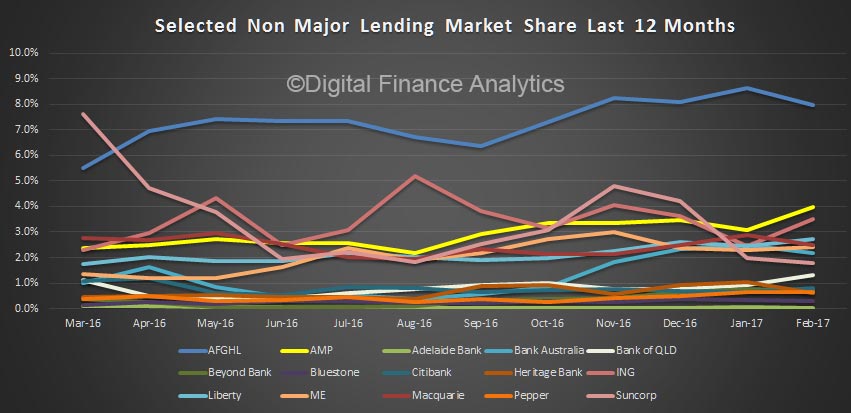Further evidence of some majors deliberately dialing back their home loan origination via the broker channel is provided by data from AFG who reported in their latest Competition Index that the majors’ share of the market dropped again to 65.25% to continue the trend of the last six months. This is of course based on data though their books, so may not reflect the overall market, but is a fair indicator nevertheless.
 Significantly, we see a fall by CBA and a rise by ANZ, both policy directed decisions. Some of the slack is being taken up by smaller lenders.
Significantly, we see a fall by CBA and a rise by ANZ, both policy directed decisions. Some of the slack is being taken up by smaller lenders.
The major banks dropped their share of fixed rate mortgages at 56.66 per cent, down from 64.98 per cent on the quarter ending January 2017, and a significant 12 per cent down on a year ago.
Also, refinancing through the majors dropped to 54.93 per cent of market share, and investor mortgages to the majors fell to 67.56 per cent of market share, around 7 per cent lower than the same period last year.
The recent political spotlight on the major lenders may encourage them to assess their competitive position as they once again fall out of favour with consumers. The non-major lenders have increased their market share to a post-GFC high of almost 35% across the quarter.
“The non-majors have continued to take market share from the majors this quarter, particularly among those seeking to refinance. Their share of the refinancing market grew by 6.5% with the big winners being AMP and ING,” said Mr Hewitt.
The non-majors also gained ground with those looking to fix their interest rate. Non-majors recorded an 8% lift in market share for fixed rates with ME Bank and ING leading the way.
First home buyers were also drawn towards the non-majors with a 2% gain in non-major market share evident from this group.
“Recent changes made by the Victorian state government to exempt first home buyers from stamp duty if they are purchasing a property for less than $600,000 will make this segment of the market one to watch,” said Mr Hewitt.
This latest move comes on top of a doubling of the first home buyers grant for regional purchases in that state and news of a $50 million pilot program designed to help people co-purchase a dwelling with the Victorian government set to launch next year.


